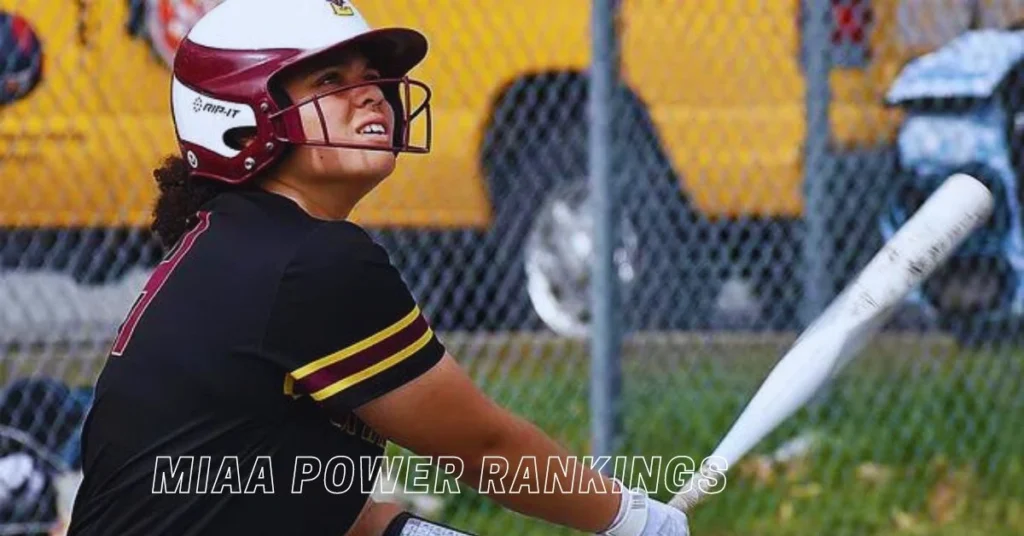Introduction
The Mid-America Intercollegiate Athletics Association (MIAA) is a collegiate athletic conference competing in the NCAA’s Division II. The MIAA includes schools from various states in the central United States, and its sports programs are known for their competitive nature and high standards. The MIAA power rankings are crucial for understanding the relative strengths of teams across different sports within the conference. This analysis provides a detailed look at the power rankings within the MIAA, examining various factors that contribute to these rankings and their implications for the teams involved.
Understanding the MIAA Power Rankings
Overview of the MIAA
The MIAA, founded in 1912, has evolved into a prominent conference in NCAA Division II athletics. It consists of member schools primarily located in Missouri, Kansas, Nebraska, and Oklahoma. The conference is known for its competitive teams and a wide range of sports, including football, basketball, soccer, and volleyball. The power rankings within the MIAA reflect the current standings and performance levels of these teams across different sports.
Importance of Power Rankings
Power rankings in the MIAA are crucial for several reasons. They provide an overview of team performance and help in determining seeding for conference tournaments. These rankings also influence media coverage, fan engagement, and recruitment. Coaches and players use power rankings to gauge their team’s progress and to strategize for upcoming games and tournaments.
Factors Influencing MIAA Power Rankings
Team Performance Metrics
The primary factor influencing MIAA power rankings is team performance. Metrics such as win-loss records, points scored, and points allowed are fundamental in evaluating a team’s strength. For example, a football team’s performance in regular-season games, including victories against top-ranked opponents, plays a significant role in its ranking.
Strength of Schedule
The strength of the schedule is another critical factor in power rankings. Teams that face more challenging opponents and perform well against them are often ranked higher. The difficulty of the opponents’ previous opponents also contributes to the strength of the schedule, reflecting the overall competitiveness of the teams in the conference.
Head-to-Head Matchups
Head-to-head matchups provide a direct comparison between teams and are a key component of power rankings. A team’s performance in games against other top-ranked teams can significantly impact its ranking. Victories over higher-ranked teams or close games against strong opponents can enhance a team’s position in the rankings.
Recent Performance Trends
Recent performance trends are closely monitored in the MIAA power rankings. Teams that show consistent improvement or demonstrate a strong finish to the season often experience a rise in the rankings. Conversely, teams with declining performance or struggling with injuries may see a drop in their rankings.
Historical Performance
Historical performance and past achievements also play a role in power rankings. Teams with a history of success in the MIAA or those with strong performances in previous seasons may be ranked higher due to their proven track record. This historical perspective helps to contextualize current performance and rankings.
Current MIAA Power Rankings: Key Sports
Football
In the MIAA, football power rankings are a major focus due to the sport’s popularity and competitive nature. Teams such as Northwest Missouri State, Pittsburg State, and Missouri Western State frequently appear at the top of the rankings. These teams are known for their strong recruiting classes, skilled coaching staff, and consistent performance in regular-season games and playoffs.
Basketball
Basketball power rankings in the MIAA are influenced by teams’ performance in both conference play and non-conference games. Schools like Emporia State, Washburn, and Lincoln University often feature prominently in the rankings due to their competitive squads and successful seasons. Performance in key matchups and conference tournaments significantly impacts their standings.
Soccer
Soccer power rankings in the MIAA are shaped by the teams’ performance in regular-season games and conference championships. Teams such as Central Missouri and Missouri Southern State are known for their strong soccer programs and frequently appear in the top rankings. The ability to perform well in crucial games and tournaments is a key determinant in soccer rankings.
Volleyball
Volleyball power rankings are influenced by teams’ performance in both conference matches and national tournaments. Teams like Central Missouri and Nebraska-Kearney are prominent in the rankings due to their consistent performance and successful seasons. Key factors include match outcomes, set differentials, and overall team performance.
Implications of Power Rankings
Impact on Conference Tournaments
The MIAA power rankings directly impact seeding for conference tournaments. Higher-ranked teams typically receive favorable seeding, which can provide a significant advantage in the tournament. This advantage may include home-court or home-field benefits, which can influence the outcome of crucial games.
Media Coverage and Fan Engagement
Power rankings also affect media coverage and fan engagement. High-ranking teams often receive more attention from media outlets, leading to increased visibility and fan support. This can boost ticket sales, merchandise revenue, and overall fan engagement.
Recruitment and Team Building
For coaches and athletic programs, power rankings are a valuable tool for recruitment and team building. Teams that consistently rank high attract top recruits and gain a competitive edge in building their programs. A strong ranking can be used as a selling point to prospective athletes and their families.
Challenges and Criticisms
Subjectivity in Rankings
One of the challenges with power rankings is their inherent subjectivity. Different ranking systems and methodologies may produce varying results, leading to debates about the accuracy and fairness of the rankings. The criteria used to evaluate teams can differ, influencing the overall rankings.
Impact of Injuries and Changes
Injuries and changes in team composition can significantly impact power rankings. A team that is highly ranked may experience a drop in performance due to key player injuries or roster changes. Conversely, a previously lower-ranked team may rise in the rankings with improvements in performance or player additions.
Consistency and Accuracy
Maintaining consistency and accuracy in power rankings is crucial for their credibility. Inaccurate or inconsistent rankings can undermine the reliability of the rankings and affect the confidence of teams, coaches, and fans in the ranking system.
Future Trends and Developments
Evolution of Ranking Methodologies
The methodologies used for power rankings are continually evolving. Advances in data analytics and statistical modeling are providing more sophisticated tools for evaluating team performance. These developments may lead to more accurate and comprehensive power rankings in the future.
Integration of Technology and Data Analytics
The integration of technology and data analytics is likely to play a significant role in shaping future power rankings. Enhanced data collection and analysis methods can provide deeper insights into team performance, improving the accuracy and relevance of rankings.
Impact of Changes in Conference Structure
Changes in the conference structure, such as expansions or realignments, can impact power rankings. The introduction of new teams or shifts in conference composition may alter the competitive landscape and influence the rankings.
Conclusion
The MIAA power rankings provide a comprehensive view of team performance within the conference. By examining various factors such as team performance metrics, strength of schedule, head-to-head matchups, and historical performance, the rankings offer valuable insights into the relative strengths of teams across different sports. While power rankings play a crucial role in shaping conference tournaments, media coverage, and recruitment, they also face challenges related to subjectivity and accuracy. As methodologies and technologies continue to evolve, the future of MIAA power rankings promises to offer even more refined and insightful evaluations of team performance.
Read More: Tetaze in Different Industries







